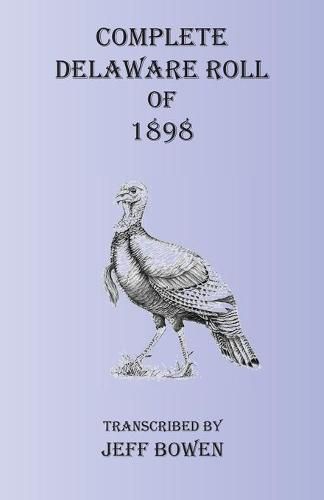Readings Newsletter
Become a Readings Member to make your shopping experience even easier.
Sign in or sign up for free!
You’re not far away from qualifying for FREE standard shipping within Australia
You’ve qualified for FREE standard shipping within Australia
The cart is loading…






This title is printed to order. This book may have been self-published. If so, we cannot guarantee the quality of the content. In the main most books will have gone through the editing process however some may not. We therefore suggest that you be aware of this before ordering this book. If in doubt check either the author or publisher’s details as we are unable to accept any returns unless they are faulty. Please contact us if you have any questions.
This book addresses the fate and genealogical record of the Eastern Delaware Indians in their forced westward migration. By 1829 the Delaware had abandoned their homelands for the Kansas Territory, but this was not to be their final resting place. From that point until 1867, tribal remnants would move eight more times, finally occupying 157,000 acres of Indian (Oklahoma) Territory acquired from the Cherokee in the latter year-enough land to allocate 160 acres to each of the roughly 1,000 Delawares who made the trek.
The terms of this land transfer were in an 1866/1867 Treaty between the Delaware and the U.S. government, which also granted Cherokee citizenship to the Delaware. (Mr. Bowen has reproduced the treaty as part of the front matter to the volume.) Over the next generation, Delaware and Cherokee leaders engaged in a dispute over the permanence of the purchase made by the Delaware. On February 23, 1904, the U.S. Supreme Court resolved the dispute in favor of the Cherokee, ruling that the Delaware had only purchased the right to inhabit the property during a person’s lifetime-that is, they had purchased a life estate. The 1898 Delaware Roll, which was introduced as evidence in the suit, lists the 990 enrollees who were still living or their heirs.
The Complete Delaware Roll of 1898 itself is a relatively simple affair. Mr. Bowen’s introduction and a transcription of the Treaty of 1866/67 set the stage for what is to follow. He then lists each of the 990 Delaware claimants, whether living or dead; the names of family members, with their relationship to the claimant; and the ages of all persons identified. The volume concludes with a complete name index of the roughly 2,500 persons listed in the book. This easy-to-use reference is a must for persons tracing their Delaware ancestry.
$9.00 standard shipping within Australia
FREE standard shipping within Australia for orders over $100.00
Express & International shipping calculated at checkout
This title is printed to order. This book may have been self-published. If so, we cannot guarantee the quality of the content. In the main most books will have gone through the editing process however some may not. We therefore suggest that you be aware of this before ordering this book. If in doubt check either the author or publisher’s details as we are unable to accept any returns unless they are faulty. Please contact us if you have any questions.
This book addresses the fate and genealogical record of the Eastern Delaware Indians in their forced westward migration. By 1829 the Delaware had abandoned their homelands for the Kansas Territory, but this was not to be their final resting place. From that point until 1867, tribal remnants would move eight more times, finally occupying 157,000 acres of Indian (Oklahoma) Territory acquired from the Cherokee in the latter year-enough land to allocate 160 acres to each of the roughly 1,000 Delawares who made the trek.
The terms of this land transfer were in an 1866/1867 Treaty between the Delaware and the U.S. government, which also granted Cherokee citizenship to the Delaware. (Mr. Bowen has reproduced the treaty as part of the front matter to the volume.) Over the next generation, Delaware and Cherokee leaders engaged in a dispute over the permanence of the purchase made by the Delaware. On February 23, 1904, the U.S. Supreme Court resolved the dispute in favor of the Cherokee, ruling that the Delaware had only purchased the right to inhabit the property during a person’s lifetime-that is, they had purchased a life estate. The 1898 Delaware Roll, which was introduced as evidence in the suit, lists the 990 enrollees who were still living or their heirs.
The Complete Delaware Roll of 1898 itself is a relatively simple affair. Mr. Bowen’s introduction and a transcription of the Treaty of 1866/67 set the stage for what is to follow. He then lists each of the 990 Delaware claimants, whether living or dead; the names of family members, with their relationship to the claimant; and the ages of all persons identified. The volume concludes with a complete name index of the roughly 2,500 persons listed in the book. This easy-to-use reference is a must for persons tracing their Delaware ancestry.